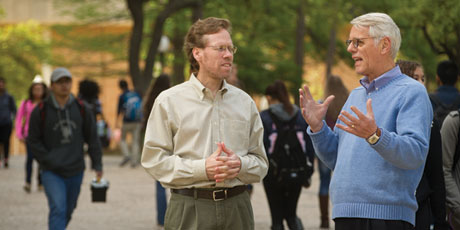Drained
Wiping Out Malaria
Researcher challenges leading argument about mosquito-borne illness, boosts hope that malaria can be eliminated

Eradicating malaria is a top goal for health leaders across the globe. The mosquito-borne illness infected more than 200 million people in 2012, ultimately killing more than 600,000, according to recent studies.
But while many scientists have emphasized the importance of removing potential victims from mosquito breeding grounds, political scientist Daniel Sledge’s research suggests that more focus should be put on public health interventions.
In his article “Eliminating Malaria in the American South: An Analysis of the Decline of Malaria in 1930s Alabama,” Dr. Sledge and co-author George Mohler, assistant professor of mathematics and computer science at Santa Clara University, took a fresh look at the decline of malaria in the American South in the early 20th century. Their conclusions challenge the leading argument that it was caused by the migration of southern tenant farmers from the hardest hit areas to northern states where factory work was available.
“Instead, we found that large-scale drainage projects, backed up by the creation of state and local public health infrastructure, led to the demise of malaria despite deep-seated poverty,” Sledge explains.
Large-scale drainage projects are not a principle of most malaria control programs in the global South today, but Sledge thinks the American experience with the parasite could be instructive for efforts to eliminate the disease.
Beth Wright, dean of the College of Liberal Arts, believes Sledge’s research benefits the public, health professionals, and policymakers globally.
“Dr. Sledge’s work has far-reaching implications for those who work to eradicate malaria and similar diseases,” she says. “Huge challenges remain, but such research brings about better understanding of potential solutions and could ultimately help save lives.”

















